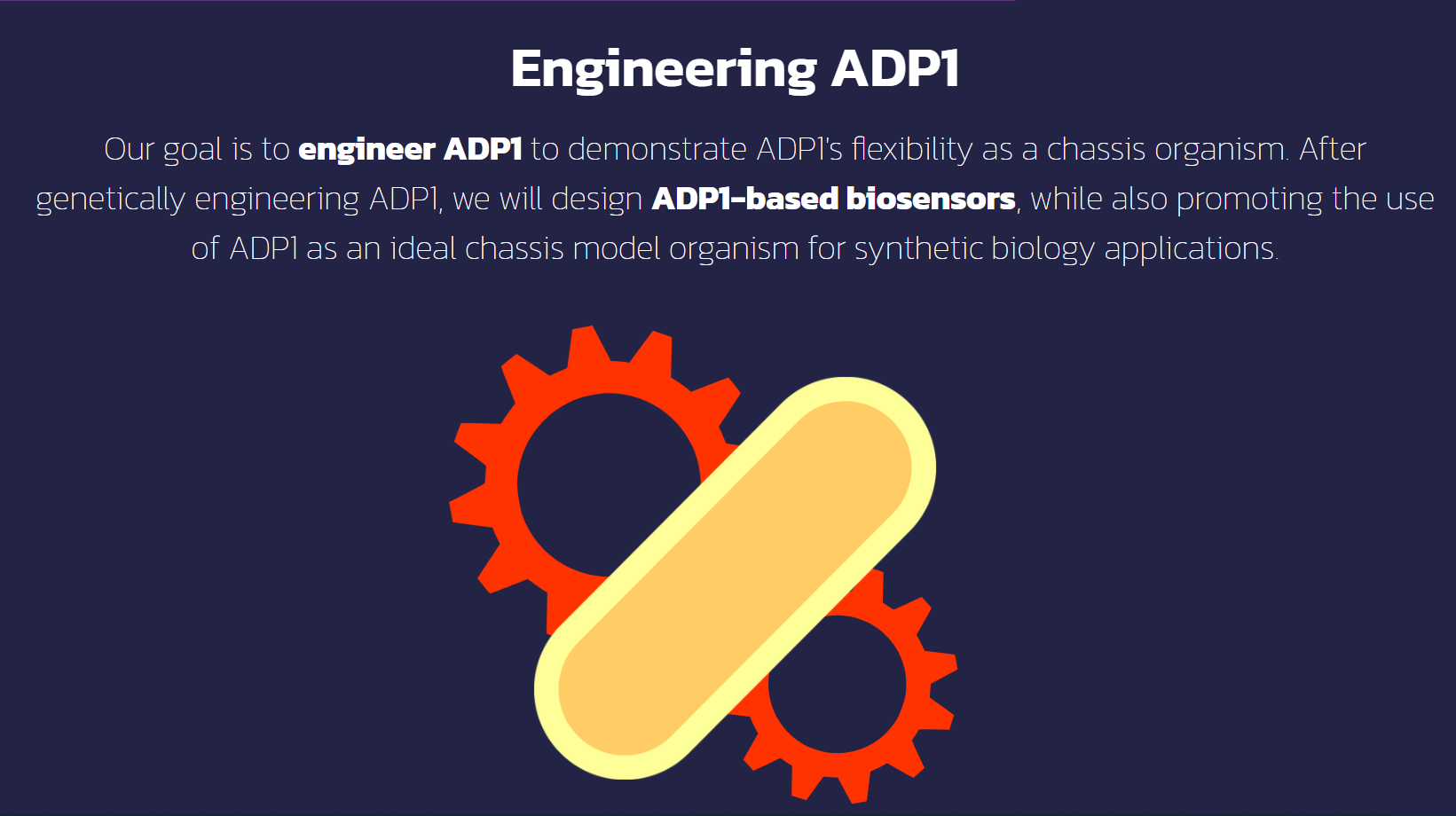Part:BBa_K4342006
P. destructans Target Sequence Downstream
Introduction
The 2022 UT Austin iGEM Team’s Part Collection provides a number of DNA sequences and procedures for genetically engineering Acinetobacter baylyi ADP1. We were able to effectively engineer ADP1's genome using a two-step genetic engineering protocol. See the Engineering Page for more details on how we modified ADP1's genome. On this page, we explain how our part collection can be used alongside this two-step protocol to delete ADP1 genes, insert DNA sequences into any chromosomal location, and engineer an ADP1-based biosensor to detect any DNA sequence of interest.
We hope this part collection guides future iGEM teams in engineering ADP1 and utilizing ADP1’s flexibility to tackle any challenge in synthetic biology.
Categorization
For our parts collection, we categorize our parts into the following categories:
Upstream
An Upstream basic part is a DNA sequence directly upstream of a target gene. These basic parts are homology flanks that are used for ADP1 Genetic Engineering. Examples include the ACIAD2049 Upstream for P. destructans detector (BBa_4342003) and pbpG Upstream (BBa_4342011).
Downstream
A Downstream basic part is a DNA sequence directly downstream of a target gene. These basic parts are homology flanks that are used for ADP1 Genetic Engineering. Examples include ACIAD2049 Downstream for P. destructans detector (BBa_4342004) and pbpG Downstream (BBa_4342012).
Integration Cassettes
An "Integration" cassette is a composite part consisting of an "Upstream" basic part, the tdk/kan basic part (BBa_4342000), and a "Downstream" basic part. These parts are designed to use in the first transformation step in ADP1 Genetic Engineering. Examples include the ACIAD2049 Integration cassette (BBa_4342019) and the acrB Integration cassette (BBa_4342023).
Rescue Cassettes
"Rescue" cassette is a composite part consisting of an "Upstream" basic part, an optional genetic device, and a "Downstream" basic part. These parts are designed to use in the second transformation step in ADP1 Genetic Engineering. Examples include the ACIAD2049 Rescue cassette (BBa_4342020, Upstream + Downstream), the YFP Rescue cassette (BBa_4342030, Upstream + Genetic Device + Downstream), and the nptII Detector Rescue cassette (BBa_4342031, Upstream + Composite Part + Downstream).
Genetic Device
"Genetic Device" is a basic part that can be any DNA sequence to be integrated into ADP1. Examples include the CymR YFP (BBa_4342008) and the nptII Broken Gene (BBa_4342015).
We further categorize each part with a standardized Golden Gate Assembly (GGA) Type 1-8 Overhang [2]. Each type is ligated to a complementary type (ex. Type 2 can be ligated to Type 1 and Type 3). Moreover, some parts contain consecutive GGA Type numbers, such as Type 234. These DNA sequences start with a Type 2 Overhang and end with a Type 4 Overhang (ex. tdk/kan cassette (BBa_4342000).
P. destructans Downstream is categorized as a Type 7 Downstream basic part in our part collection.
Usage and Biology
Pseudogymnoascus destructans is a fungus that causes White Nose Syndrome (WNS), a disease that has killed over 6 million bats in North America alone [1]. Via BLAST searching, we found a DNA sequence unique to P. destructans to use as a target for homologous recombination in our ADP1-based WNS biosensor. Using this part, we demonstrate the potential of ADP1 to be engineered to detect DNA in the environment.
Design
This part comprises the latter 1093 base pairs of the P. destructans target sequence. This part has BsaI restriction sites attached to the 5' and 3' ends, which are designed to ligate to the cymR Repressor part[h ttp://parts.igem.org/Part:BBa_K4342007 (BBa_4342007)] and ACIAD2049 downstream homology part (BBa_4342004) respectively, via BsaI digestion. See Figure 4 on the Engineering Page for more details on how to design primers containing the correct GGA Type Overhang and restriction sites.
This part contains BsaI restriction sites with a standard 4 bp GGA Type 7 Prefix and a Type 8 Suffix [2]. See the Contribution page on our wiki for more details on GGA Type Overhangs. This design allows for easy ligation with any part that contains a complementary 4 bp GGA Type 8 Prefix at the 3' end or Type 7 Suffix at the 5' end (BsaI).
Composite Parts
This basic part is used to assemble the P. destructans integration cassette (BBa_4342029)
Characterization
(DATA HERE!)
References
[1] Hopkins, M.C., and Soileau, S.C. (2018) U.S. Geological Survey response to white-nose syndrome in bats: U.S. Geological Survey Fact Sheet 2018–3020, 4 p., https://doi.org/10.3133/fs20183020.
[2] Lee, M.E., DeLoache, W.C., Cervantes, B., and Dueber, J.E. (2015). A highly characterized yeast toolkit for modular, multipart assembly. ACS synthetic biology 4, 975–986. 10.1021/sb500366v.
- 10COMPATIBLE WITH RFC[10]
- 12COMPATIBLE WITH RFC[12]
- 21COMPATIBLE WITH RFC[21]
- 23COMPATIBLE WITH RFC[23]
- 25COMPATIBLE WITH RFC[25]
- 1000COMPATIBLE WITH RFC[1000]
| None |

